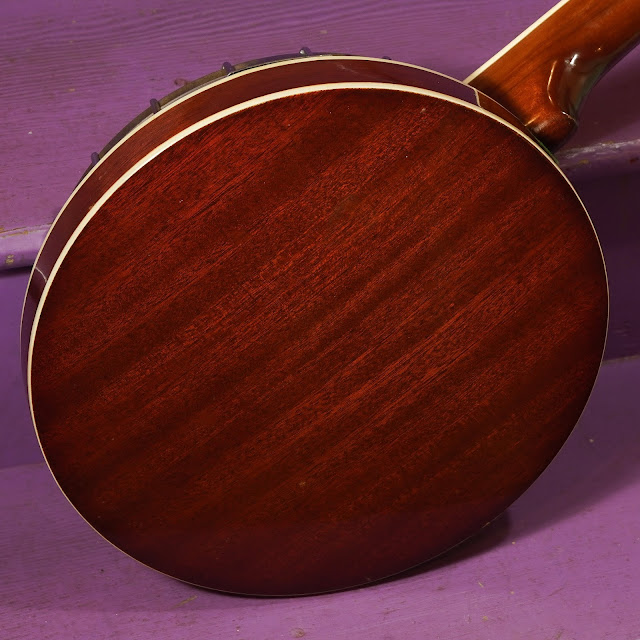1960s Conqueror (Japan-made) 5-String Banjo
I've seen so, so many of this type of banjo pass through the shop. They're aluminum-rimmed, have a single coordinator rod with an "action-adjustment" turnbuckle setup like a Kay banjo from the '40s and '50s, and resonators which are usually a pain to remove. When they come in they play and sound like garbage no matter how much fuss has been given to them, but when fixed-up properly they're loud, poppy, and have a mellow sort of "plop" to the sound that's endearing. I have to admit I'm a bit of a fan of aluminum banjo rims. Sorry!
This one was gifted to me in the usual ragged state but only a day later I had a fellow call up asking after cheap banjos for his friend. This will be available to said friend for the price of parts and labor and perhaps he'll take it home! He was after a bluegrass-style instrument, anyhow, and this is a cheap banjo and it is a resonator banjo.
Work was the usual stuff -- a level/dress of the frets, replacement (Gotoh, with vintage button) 5th peg, new 2-foot Grover bridge (now compensated), a new Remo Renaissane head, lots of cleaning, and alteration of the neck joint. I cut the heel a bit so the neck could sit "farther up" off the top of the rim and then also predrilled and fit two "keeper bolts" to the lower portion of the heel to solidly keep it in position and alignment with the head and rim.
These come "stock" with a single bolt attachment for the neck and as a result the "factory" setup at the heel means the dang thing rotates all over the place and action gets squirrely pretty fast. With these changes the instrument is rock-solid and only needs to have its action adjusted at the coordinator rod later.
Despite all that, the neck has a hair of relief (~1/64") throughout but that might as well be bang flat for all it changes playability. Strings are 10s.
Folks might find it funny to know that the neck itself on this is made from many plys of mahogany and the fretboard is plywood, too! Only the best!













Comments